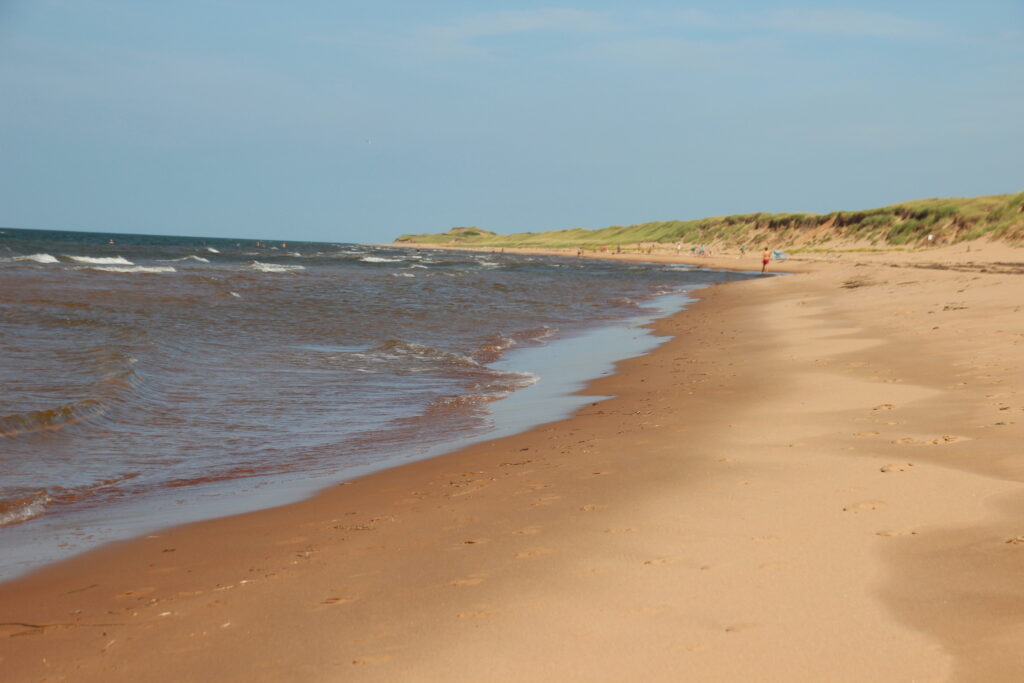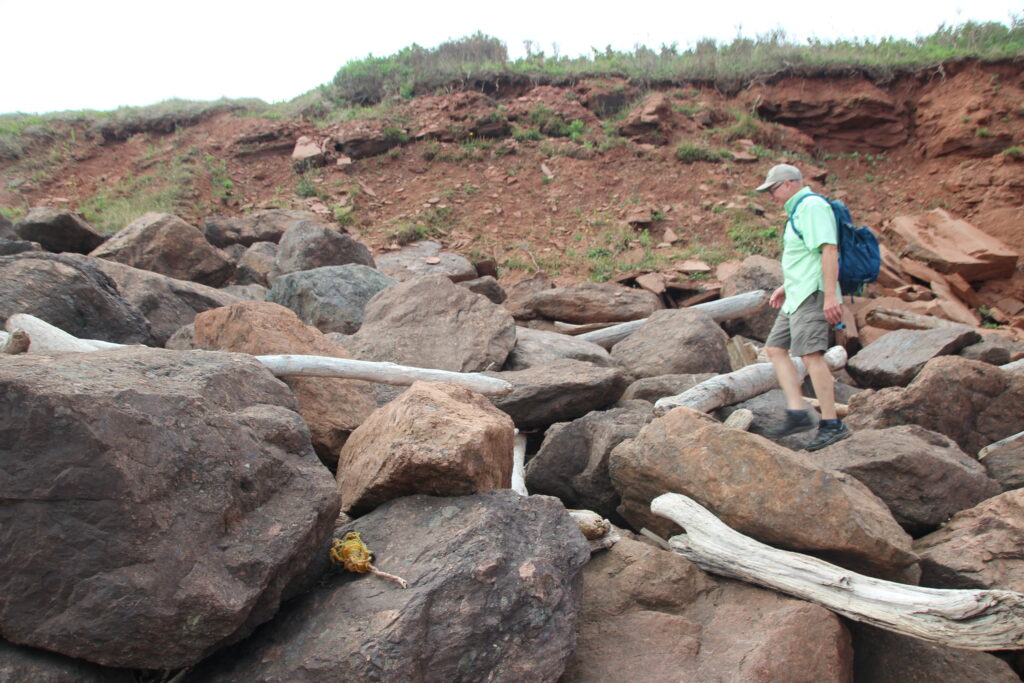This vulnerable Canadian island is proactively readying for climate impacts — and the lessons it’s learning are benefiting other coastal locales.
Dr. Adam Fenech is standing at the entrance to a drone port at the new $16 million Centre for Climate Change and Adaptation on Prince Edward Island (PEI). PEI is Canada’s smallest and only island province — just 174 miles long and 2,185 square miles in size, with a population of 153,000; its size makes it ideal as a controlled case study area for climate change and adaptation. The work of Dr. Fenech and his graduate students at this extension of the University of PEI could help protect the island from the worst of the threats posed by climate change.
The center is built on a hillside in the coastal village of St. Peter’s and is itself a model for future construction. It’s an ultra-modern, carbon neutral, wood-and-metal clad structure that generates its own geothermal and solar power. The nearby PEI National Park is a series of coastal strips that serves as an outdoor classroom where students and staff conduct course work, collect data, and study the impacts of climate change on coastal landscapes (as well as on the wetland, field, and forest ecosystems behind them).
“It’s like Mission Impossible in there,” Fenech jokes about the drone port. As the Associate Dean at UPEI’s School of Climate Change and Adaptation, Fenech led the creation and construction of the new center. From here, students and faculty fly Canada’s largest drone fleet around the island. Models like the Phoenix Terrahawk and the DJI Matrice are equipped with thermal cameras. The Harris Carrier lives up to its name — it carries a LiDAR (light detection and ranging) unit, which can help generate 3-D images of the island’s coastline. The collected data helps predict where the coastline is most at risk and which parts should be targeted for protection against future impacts. After the island experienced massive damage during Hurricane Fiona in 2022, residents consider the center’s work to be increasingly urgent.
“PEI is particularly vulnerable, because we’re essentially a big sand bar,” says Fenech, adding that the island faces multiple threats: higher temperatures, more frequent and more powerful storms, sea level rise, and coastal erosion. Many residents depend on fishing and farming for their livelihood, so climate change adaptation is important to islanders and to the province as a whole.
The center’s work is already assisting farmers, fishermen, and others. Drones collect data that determines plant health and water distribution in farmers’ fields to help them target the use of irrigation and other resources, resulting in improved yields, increased profits, and savings on everything from fertilizer to insurance.
Drone data, historical records, satellite data, and information collected at dozens of weather and tidal stations positioned around the island are helping develop sophisticated maps of PEI’s coastline. Some locations are more vulnerable than others; Hurricane Fiona alone stole 82 feet of coastline at Miminegash Harbour. Along a mile of beach near Savage Harbour, the sea has advanced fifteen feet inland, a loss of nearly ten square miles since 1968, when current data is compared to historical records.
Collected information is fed into a system developed by Dr. Fenech and his UPEI students called CLIVE (Coastal Impacts Visualization Environment), which immerses users into a 3-D model of a city or other region to help people experience long-range changes in sea level rise and coastal erosion. (CLIVE has also been used in California and the Caribbean.)
“It gives you an immediate assessment of the vulnerability of an area. The more realistic it gets, the scarier it gets,” Dr. Fenech says, noting that “Los Angeles called it a discussion starting tool.” The Massachusetts Institute of Technology’s Center for Collective Intelligence Climate Co-Lab awarded Dr. Fenech an award for his work applying CLIVE to PEI. “It’s a powerful tool,” he says. “You’re standing in Charlottetown, and the water rises above your head. Even though it’s not real, you start panicking.”
Based on the center’s research, PEI government officials have created changes in land use and construction policy. New buildings must be situated 100 feet or sixty times the rate of erosion from the water. The eastern town of Souris built a breakwater to protect a causeway from erosion. Now, the changes in tidal action are actually building up the shoreline. Dr. Fenech calls this “future-friendly thinking” that takes natural forces into consideration when planning adaptation strategies.
“It’s frightening,” Dr. Fenech says, when contemplating what sea level rise and coastal erosion could mean to the island. “We’re talking [impacts] inland a couple of kilometers.” UPEI’s Centre for Climate Change and Adaptation is demonstrating what some of the responses to protect PEI can look like. “We have so much data, drone technology, and virtual reality,” Dr. Fenech says. “We’re going to try and address climate change utilizing the most advanced technologies we have.”






